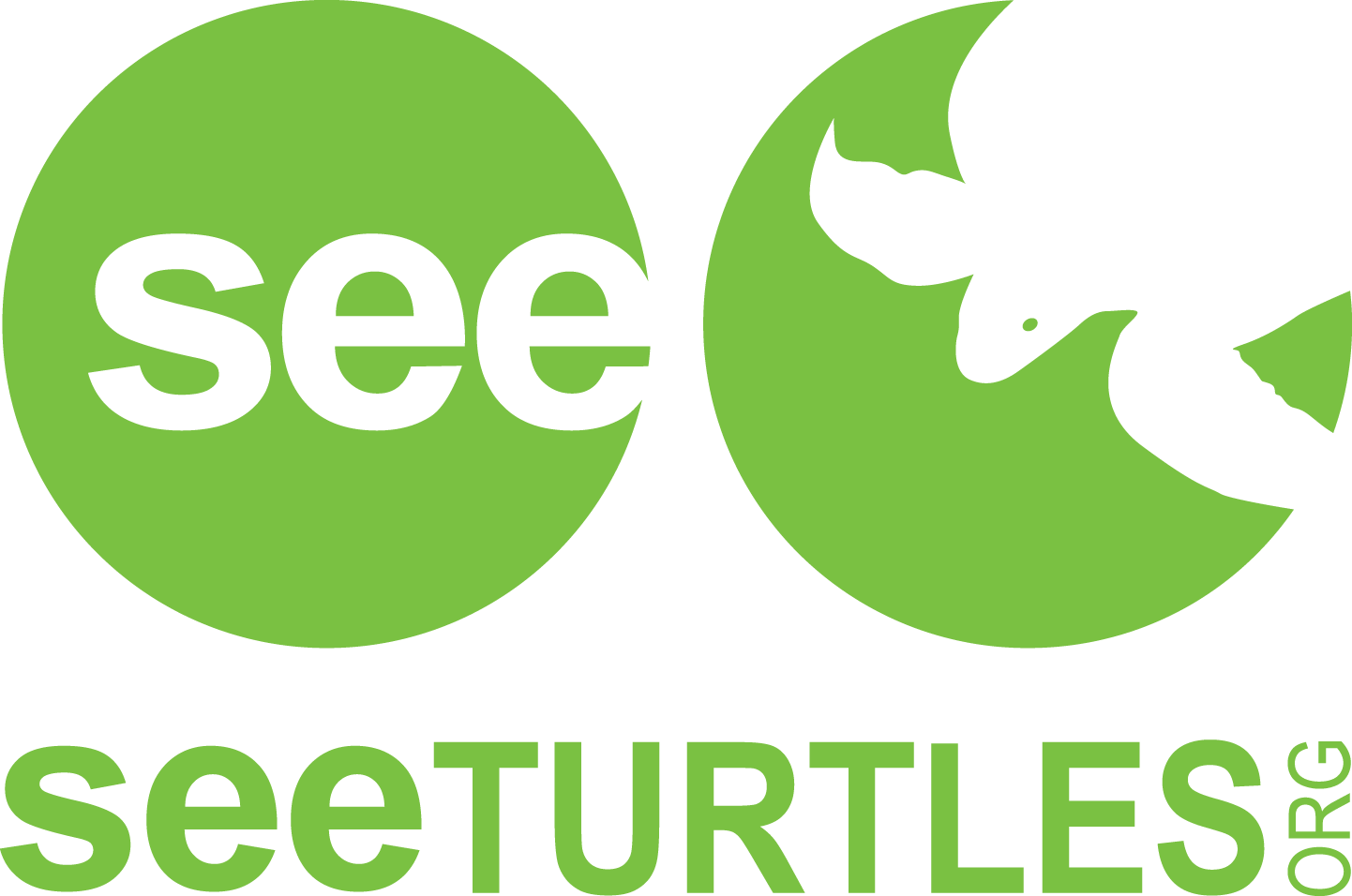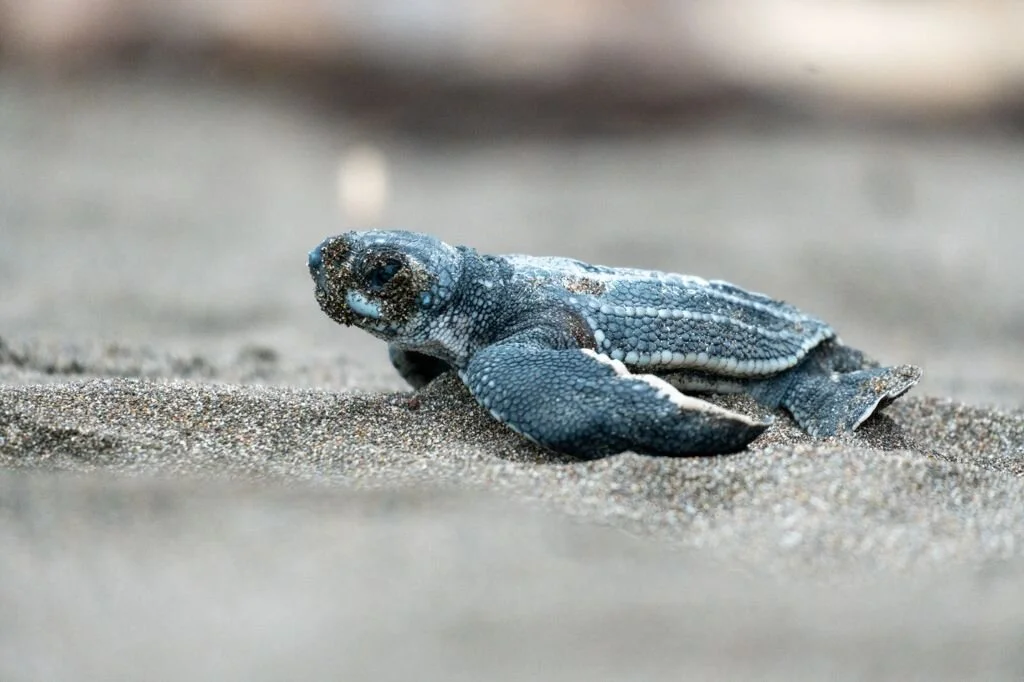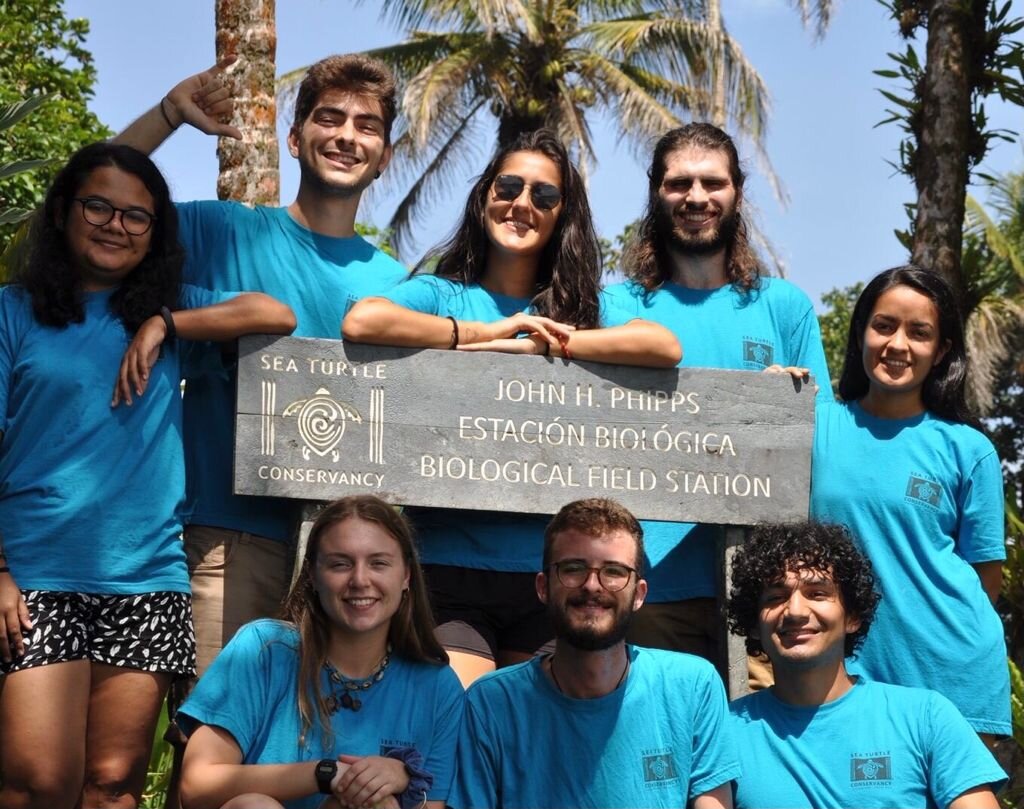By Luna Vieira
Working with sea turtles has always been a dream for me. And choosing biology as a profession was no surprise since I have grown up on the beach, but starting to work with these animals was not easy at all. Working with science in Brazil is a real challenge; of all the projects that work with marine animal conservation, very few can do enough relevant work without funding and support.
So when I was accepted into the Sea Turtle Conservancy's assistantship program and received the Sea Turtle Inclusivity Fund grant I could not contain my joy of finally realizing my dream. I felt that finally, someone believed in my ability to act in favor of the causes I stand for and that from now on I would have more people to share this fight with. For 3 months I worked as a research assistant in Tortuguero, Costa Rica, the second most important nesting site for green turtles in the world, and I can safely say that it was the best experience of my life so far.
I never imagined that my first international experience would be in Latin America, but I was amazed at how similar the cultures are, each one with its peculiarities. From the moment I disembarked in Costa Rica, the kindness of the people, the climate, the landscapes, everything enchanted me. I met the other assistants who would share these three months with me in San Jose and together we left for Tortuguero.
The trip was our first adventure. Access to this Caribbean village is restricted to boats, so after 4 hours on the road, we met Iván, the station manager, who took us on the Roxanna boat for 45 minutes to the base. Upon arrival, we were all in shock. It was much better than we could have imagined. The station was huge, we had several rooms, a library, a laboratory, kitchen (with the best cooks in the world), visitor center, and even a volleyball court! The excitement was so great that I couldn't wait to start the training. In the same week, we were introduced to the patrol protocol and to life in the village, which by the way was one of the most beautiful places I have ever visited. We did the theoretical and practical tests to see if we were ready to go out in the field, and soon we started the work.
The first patrols were a little different from what we imagined, long hours of walking, without much visibility because it was a new moon, and without turtles either. It was an atypical season in Tortuguero. The first turtle I found was unfortunately killed by a jaguar, something recurrent there but part of nature. However, after the first few weeks the rhythm started to improve, the turtles began to come out, and we could work more easily.
During this period we had time to see the beauties of Tortuguero. We visited the Cerro (which Archie Carr calls Turtle Mountain in his books), the National Park that cares for the preservation of all the flora and fauna of this region, and we went on the cocoa tour where we learned about the ancestral culture of this fruit and made our own chocolate. On sunny days we went to the beach and stroll through the village. And so our first month went by. We did some nest excavations of leatherback turtles, which was very exciting for me because it was my first contact with the species. Despite the low birth success we had the opportunity to see many babies and even analyze them in the laboratory. But I did not know that the best part was yet to come.
At the beginning of July, during a patrol on the northern part of the beach, we were walking back to the station, without having worked on a single green turtle, and suddenly we found a track. It was quite unusual, a very wide track that made circles. We followed it and under the weak light of the moon, we saw the shadow of the turtle not far from the high tide line. It was huge and my colleague immediately said it was a leatherback. I, in disbelief, said it couldn't be because it wasn't their season anymore.
But the surprise came when we approached her to find a completely dark shell with small white spots. We could not believe that we were standing next to a leatherback turtle! Maybe it was because our training had prepared us for the green turtles or because that animal was so big that it looked like a dinosaur. After the euphoria passed, we started to get ready for work. We were lucky enough to find her digging the egg chamber but since it was very close to the sea, we had to translocate it. So we waited for her to finish the process and then we collected the eggs, applied the tags, took the measurements, and finally watched this beautiful animal taking its course back to the sea. It was magical.
A few weeks later, we received a visit from Dan Evans, in charge of STC's sea turtle tracking program, to start this year's Tour de Turtles. It was an intense two days, with almost no sleep, in which we captured two green turtles and 1 hawksbill to attach satellite transmitters to their shells and understand a little more about their migrations and habits. On the first day, I was on patrol with Gerson, one of the assistants that live in the village, and we found a turtle that was about to lay eggs, so we called the station and they came by boat. We did the normal process of marking the nest and after the rest of the team arrived we were able to collect blood and tissue samples, and capture her to take to the base.
Soon after, the other team that was on patrol in the southern sector also called. It was a success; in a single night we managed to attach two transmitters. And when we were done, in the morning, we released the turtles on the beach. But we were still missing one turtle. This time we were lucky enough to find a hawksbill, which was easier because this species is smaller than the green and would be interesting to follow a hawksbill that nests in Tourtuguero, a place dominated by the greens.
During our last month, we had the surprise of receiving a notice from the Global Vision International staff, who work more north of the beach, about a loggerhead turtle that had been killed by a jaguar. For those who don't know, 4 species of turtles nests on the Caribbean coast of Costa Rica, green, leatherback, hawksbill, and loggerhead, but the latter is extremely rare and the last record we had was 12 years ago. So we took the opportunity to make a trip to Jalova and collect the skeleton of this turtle. In August I also had the pleasure to meet Renato, a Brazilian who, like me, worked with STC but ended up creating his own NGO in the country, called Turtle Love (a Billion Baby Turtles partner). He was doing his PhD in Tortuguero National Park collecting ovaries from dead turtles and it was very interesting to be able to help him sometimes, getting to know more about the physiology of my favorite animals, and exchange experiences.
When the new group of assistants arrived at the end of August, the sadness of knowing that our experience was coming to an end also came with them. But we enjoyed it to the fullest and it was great to meet more turtle people. I would like to thank the people of Tortuguero who were so kind and friendly to me, the STC team who welcomed me with open arms and taught me so much, and the SEE Turtles team for giving me opportunity to live this incredible experience that I will carry with me forever.







